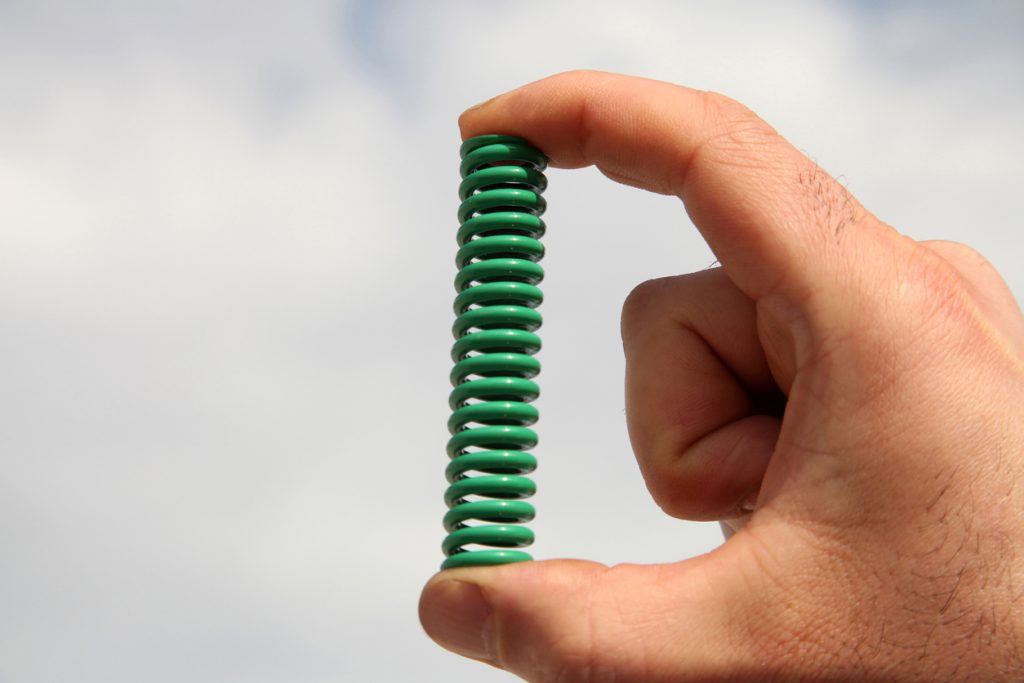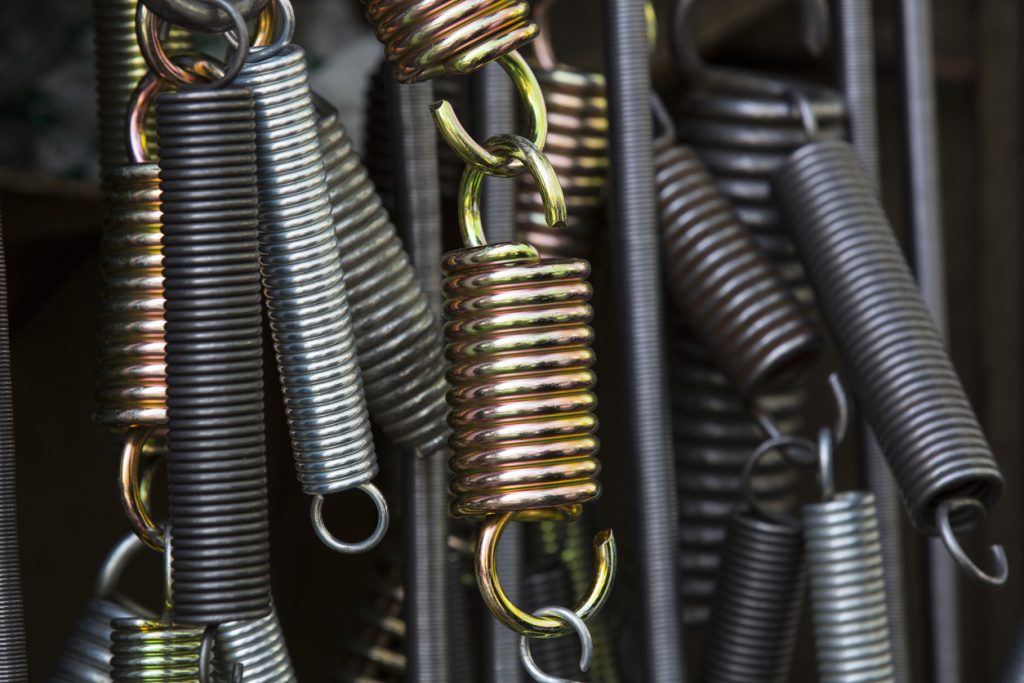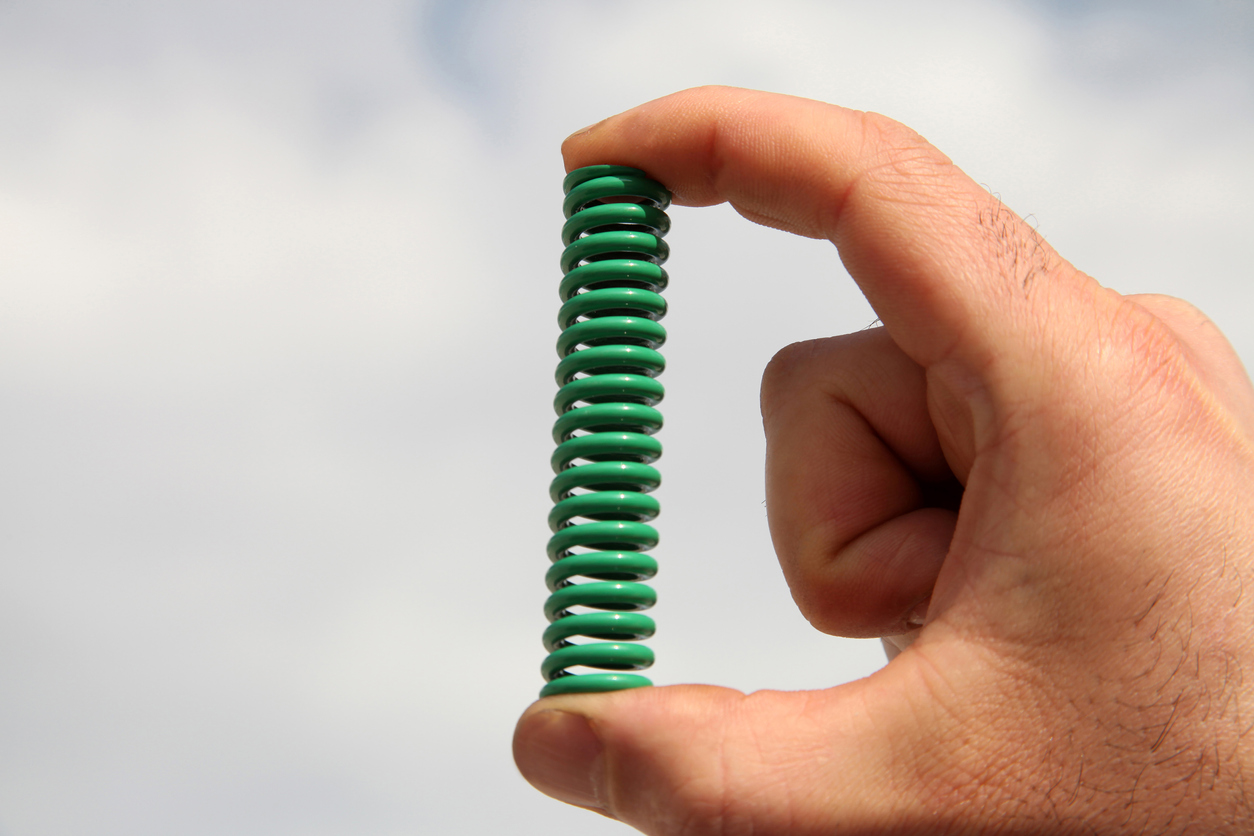If springs are integral to your industry, it’s important to understand their properties and how they function within a given application. An elastic object that stores and releases mechanical energy is valuable to many applications, but not all springs are the same. If you need to identify the correct spring for a specific function, knowing how springs work will go a long way to ensure you pick the right spring for the job. Spring deflection plays a significant role in spring functionality – but what is it, and why is it so important?

What is Spring Deflection, and How Is It Calculated?
In short, spring deflection is the manner in which a spring responds when force is applied to it or released from it. Here at Airedale Springs, we’re an expert compression spring manufacturer, so we’ll use compression springs as an example. If a compression spring compresses 1cm for every 1kg of force applied, the spring deflection rate is 1kg per cm. All springs have a limit on how far they can be compressed, torqued or extended. A spring’s maximum compression is the measurement of how far a spring can travel before it begins to suffer from stress or get damaged.
To calculate the deflection a particular spring will experience when force is applied, you need the spring deflection formula. This formula is load divided by rate (D = L/R). The load applied to the spring, divided by the spring’s deflection rate, equals the amount of deflection that will occur.
Hooke’s Law
To understand how springs function, you need to know how the laws of elasticity, torsion and force interact with one another. Together, these are known as Hooke’s Law. The law itself was named after the 17th-century British physicist Robert Hooke, who demonstrated the relationship between forces applied to a spring and its elasticity. As a principle of physicals, Hooke’s Law states that ‘the extension is proportional to the force.’
This was the first example that offered an explanation of elasticity – the property of an object or material that causes restoration of its original shape after distortion. A springs ability to return to its resting shape after experiencing distortion is referred to as ‘restoring force’ and is generally proportional to the amount of stretch the spring experienced.
The spring deflection formula mentioned above is represented in Hooke’s Law – the force needed to extend or compress a spring by a distance is proportional to that distance. The law is expressed mathematically as F=-kX. In this formula:
- F = the force applied to the spring in the form of strain or stress
- X = the displacement of the spring (a negative value demonstrating the displacement of the spring when stretched)
- K = the spring constant, detailing how stiff it is

Spring Deflection in Compression Springs
In cylindrical compression springs, deflection is linear, meaning that a given amount of weight deflects a cm of the spring equally across the whole spring. However, non-cylindrical compression springs, such as conical – like the small springs found in electronics – or hourglass-shaped springs, can experience a variable deflection rate. This means that at different points of the spring, the amount of force required for deflection changes.
Some compression springs can have force applied to them until they are compressed into a solid structure – that is, all the coils are touching one another. Other compression springs may be too stiff or sturdy to achieve full compression, and there are even designs that allow for the spring to be entirely physically compressed, but in doing so, the spring becomes permanently set. This means it doesn’t spring back to its resting shape when the force is released. Knowing which type of spring you need and how spring deflection affects its functionality will ensure you choose the correct spring for your given application – choosing the wrong spring could cause your equipment to malfunction.
Spring Deflection in Torsion Springs
Compression springs store energy when compressed and release it when extended, and tension springs do the reverse – but torsion springs function differently. Torsion springs respond to the applied torque, storing potential energy when wound up and releasing it when unwound. Therefore, when considering spring deflection in this spring style, the measurement any good torsion spring manufacturer needs to be aware of is the maximum torsion spring deflection angle. In short, this is how much angular deflection the spring can handle before becoming overstressed.
The Importance of Spring Deflection
For spring manufacturers, a thorough and complete understanding of spring deflection is essential for creating a range of high-quality springs. It is a major component in the design and manufacturing process, playing a pivotal role in determining the maximum load a spring can handle before it succumbs to stress. Understanding and accounting for spring deflection and the subsequent performance capabilities of your chosen spring will help increase its lifespan and ensure it can perform correctly under the relevant conditions.

If spring deflection still seems a little confusing, don’t worry. Our engineers at Airedale Springs are experts in their field and know everything about the springs we produce and how they function, including deflection rates and appropriate deflection for different applications. Contact us today for more information about how we can manufacture the correct springs for you.


